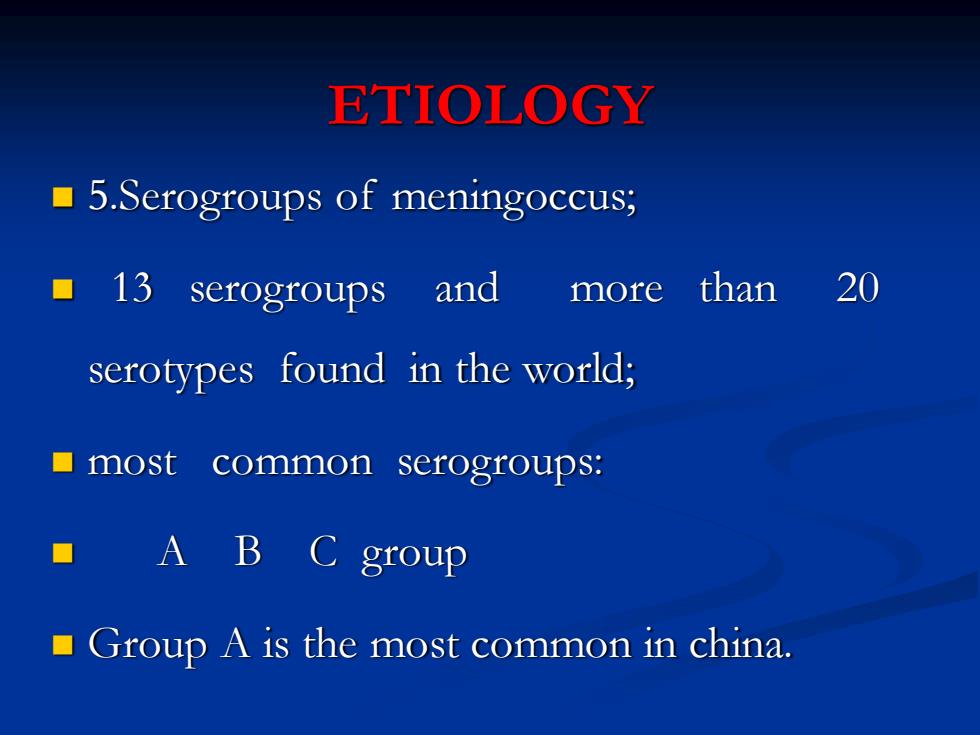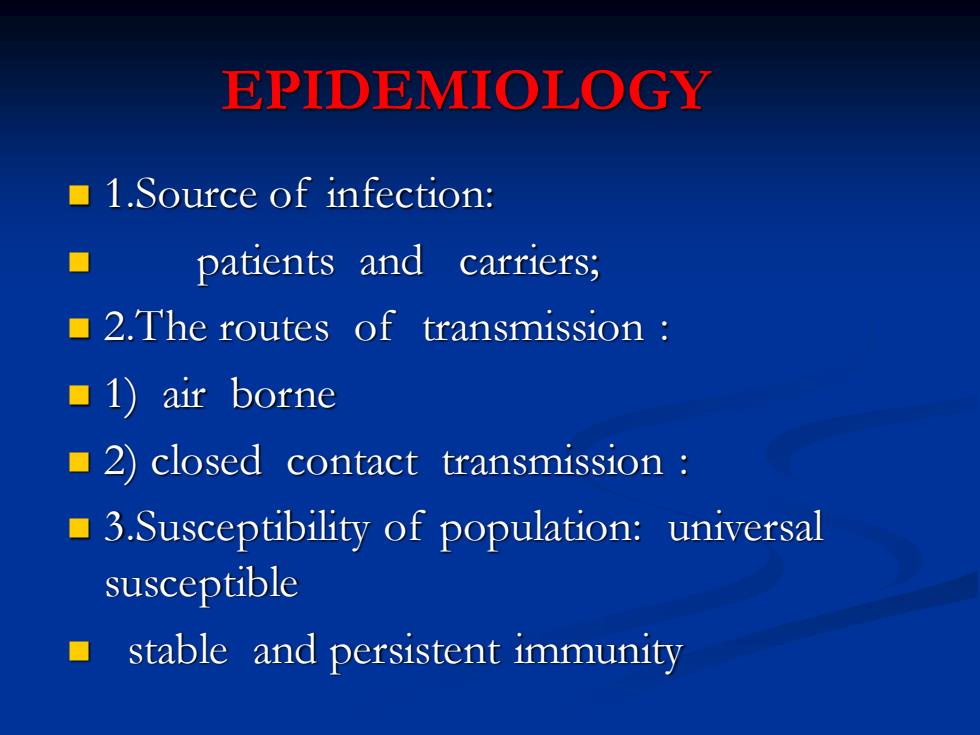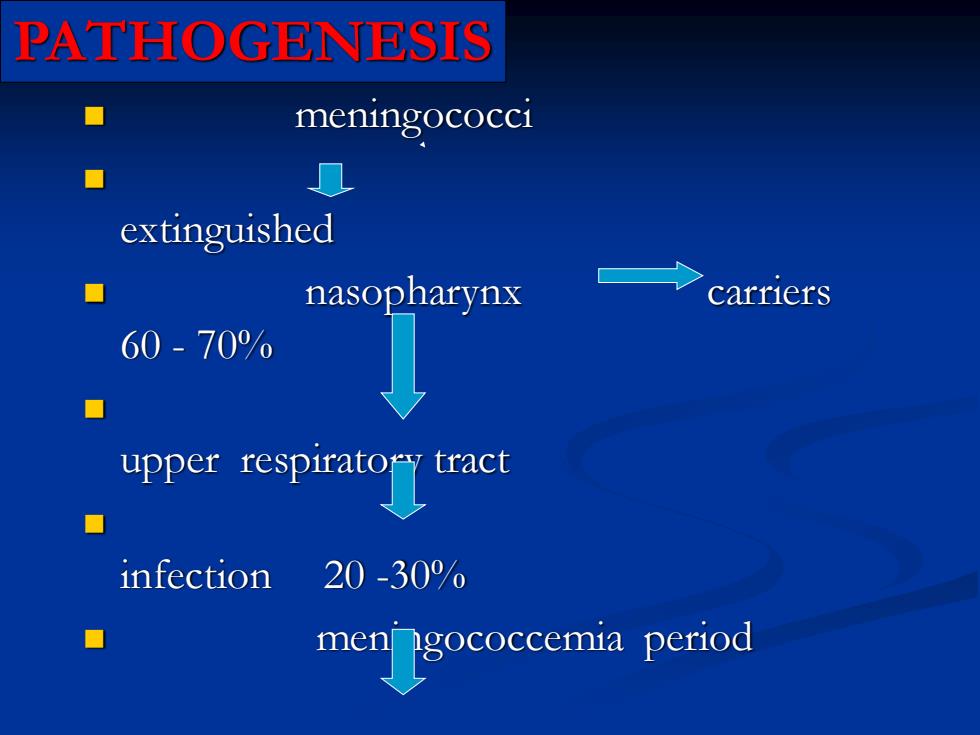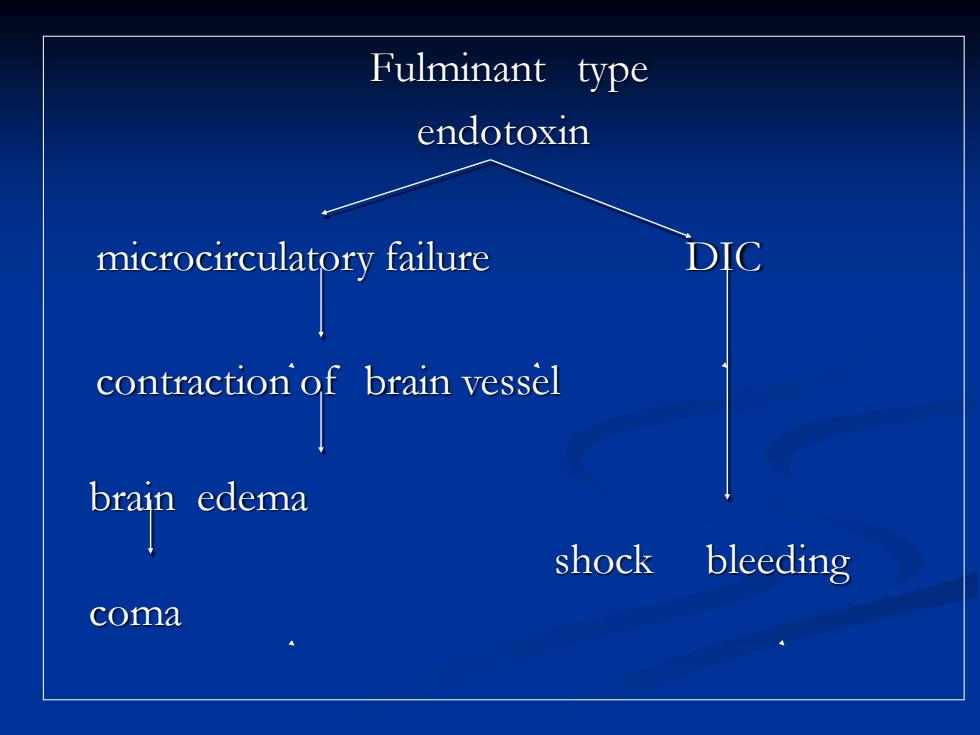
ETIOLOGY 5.Serogroups of meningoccus; ■13 serogroups and more than 20 serotypes found in the world; ■ most common serogroups: A B C group Group A is the most common in china
◼ 5.Serogroups of meningoccus; ◼ 13 serogroups and more than 20 serotypes found in the world; ◼ most common serogroups: ◼ A B C group ◼ Group A is the most common in china. ETIOLOGY

EPIDEMIOLOGY 1.Source of infection: patients and carriers; 2.The routes of transmission ■1)air borne 2)closed contact transmission 3.Susceptibility of population:universal susceptible ■ stable and persistent immunity
EPIDEMIOLOGY ◼ 1.Source of infection: ◼ patients and carriers; ◼ 2.The routes of transmission : ◼ 1) air borne ◼ 2) closed contact transmission : ◼ 3.Susceptibility of population: universal susceptible ◼ stable and persistent immunity

EPIDEMIOLOGY 4.Epidemiologic feature: (1).Season:November May high peak:March April (2).age:6 months to 2 years old
◼ 4.Epidemiologic feature: ◼ (1). Season: November - May ◼ high peak: March - April ◼ (2).age: 6 months to 2 years old EPIDEMIOLOGY

PATHOGENESIS meningococci extinguished nasopharynx carriers 60-700 upprespiratoract infection 20-30% period
PATHOGENESIS ◼ meningococci ◼ extinguished ◼ nasopharynx carriers 60 - 70% ◼ upper respiratory tract ◼ infection 20 -30% ◼ meningococcemia period septicemia

Fulminant type endotoxin microcirculatory failure DIC brain edema shock bleeding coma
Fulminant type endotoxin microcirculatory failure DIC contraction of brain vessel brain edema shock bleeding coma